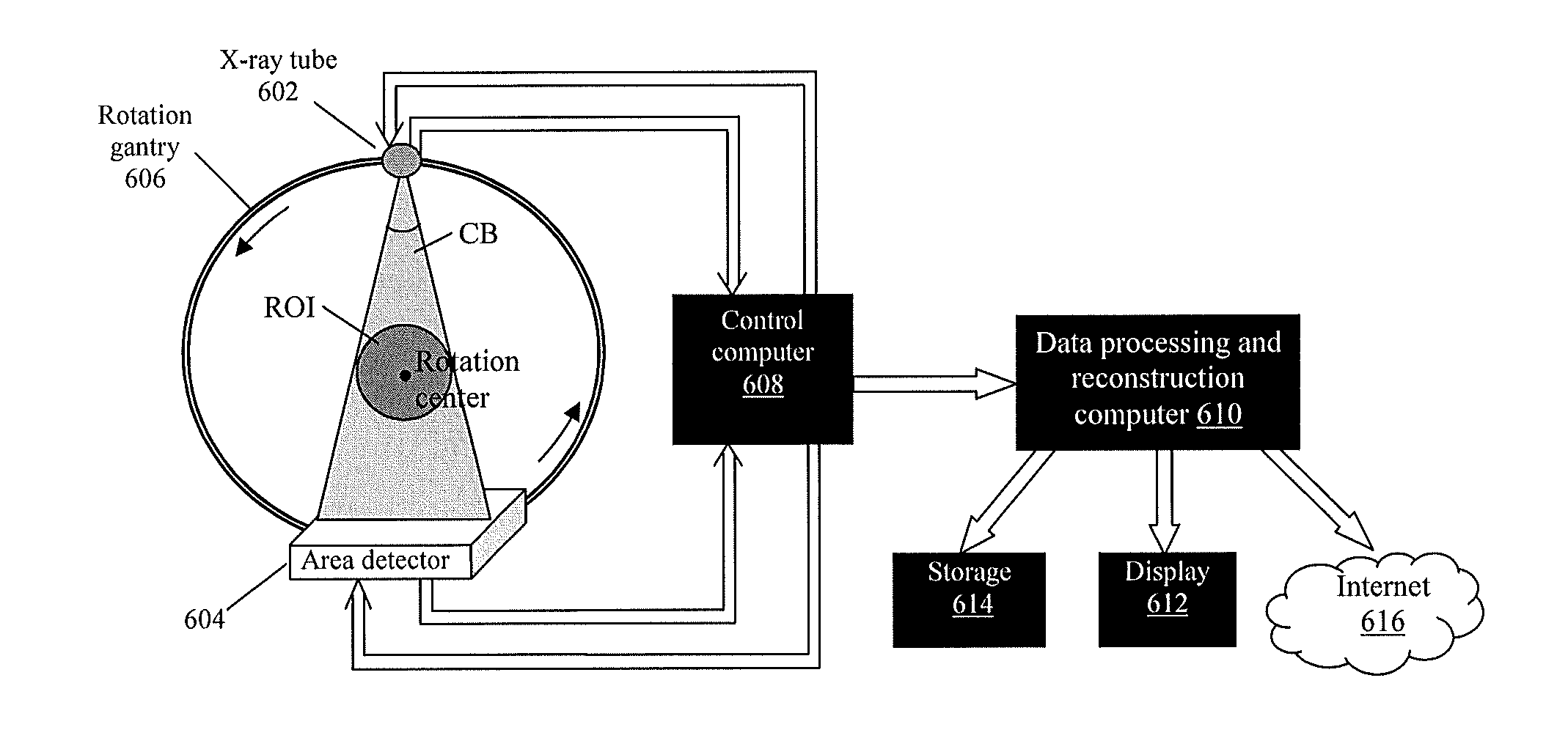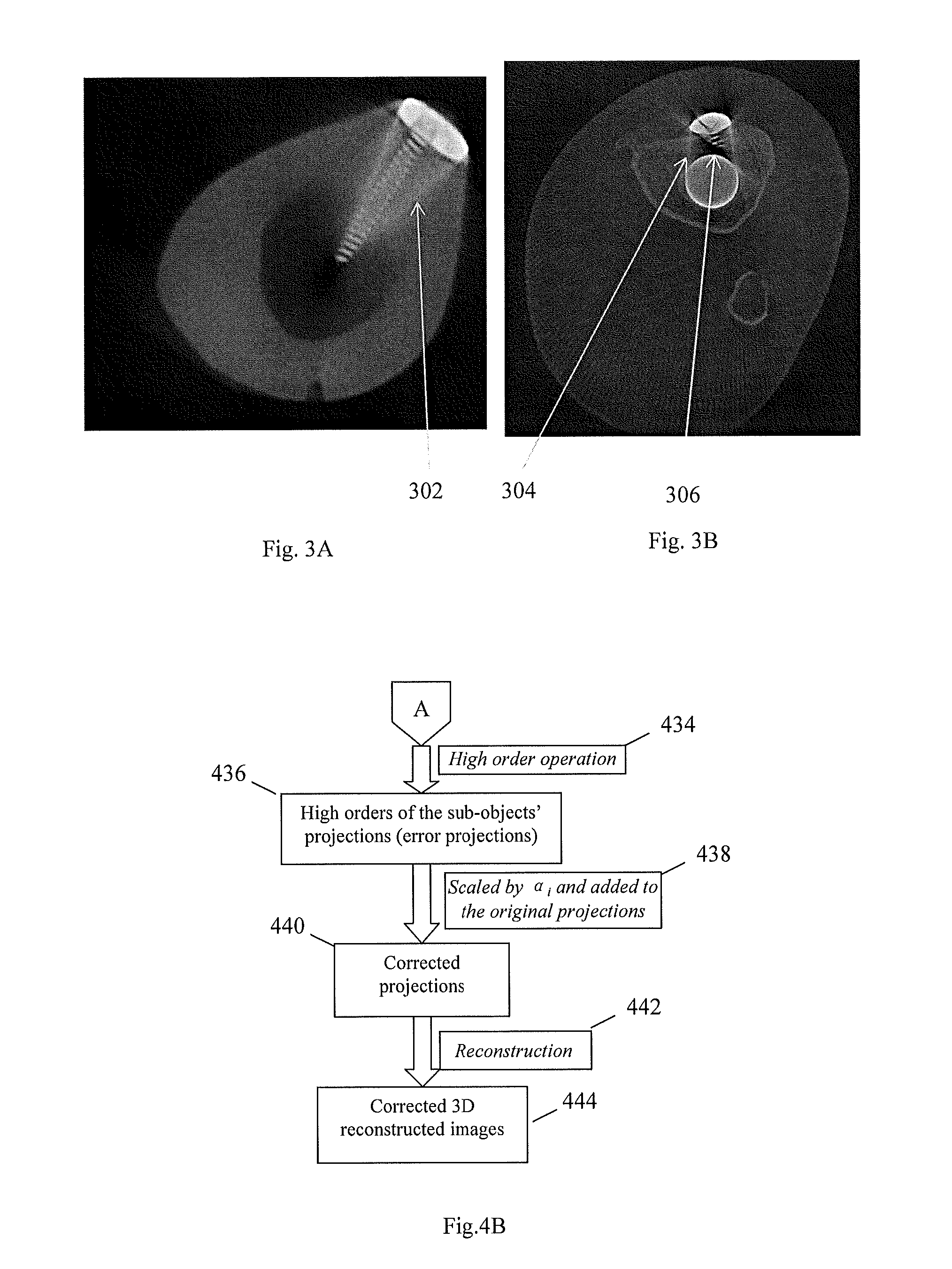Method and apparatus for 3d metal and high-density artifact correction for cone-beam and fan-beam ct imaging
a high-density artifact and cone beam technology, applied in the field of ct imaging, can solve the problems of affecting the growth of the image, affecting so as to achieve the effect of improving the quality of the imag
- Summary
- Abstract
- Description
- Claims
- Application Information
AI Technical Summary
Benefits of technology
Problems solved by technology
Method used
Image
Examples
Embodiment Construction
[0019]A preferred embodiment of the present invention will be set forth in detail with reference to the drawings, in which like reference numerals refer to like elements or steps throughout.
[0020]Metal artifacts are mainly due to the beam hardening caused by high attenuation of x-rays of metal implants. Because more low-energy photons are absorbed by metal, the x-ray beam becomes more penetrating and thus the attenuation coefficient of the object along the x-ray path appears smaller and smaller along the x-ray path. Therefore, the line integral is not linear to the length of the x-ray path anymore. Instead, it gets smaller as the x-ray path gets longer, as illustrated in FIG. 2.
[0021]Since there are discrepancies between the projection rays that pass through only one of the dense objects and the rays that pass through multiple objects, dark banding artifacts and streaking artifacts appear, as seen in FIGS. 3A and 3B, which show streaking artifacts 302 and 304 and shading artifacts 3...
PUM
 Login to View More
Login to View More Abstract
Description
Claims
Application Information
 Login to View More
Login to View More - R&D
- Intellectual Property
- Life Sciences
- Materials
- Tech Scout
- Unparalleled Data Quality
- Higher Quality Content
- 60% Fewer Hallucinations
Browse by: Latest US Patents, China's latest patents, Technical Efficacy Thesaurus, Application Domain, Technology Topic, Popular Technical Reports.
© 2025 PatSnap. All rights reserved.Legal|Privacy policy|Modern Slavery Act Transparency Statement|Sitemap|About US| Contact US: help@patsnap.com



